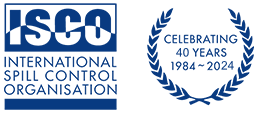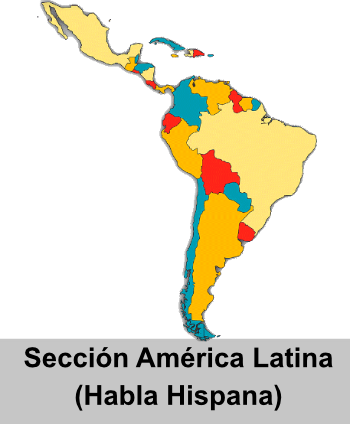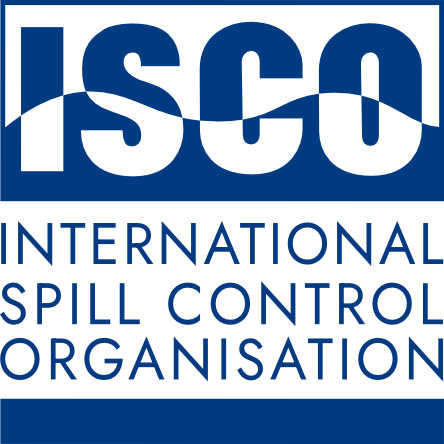This is the title of a news series being published in the ISCO Newsletter commencing in Issue 832 (4th April 2022)

Contributed by Dr Merv Fingas, this weekly column will provide the references and abstracts of new peer-reviewed scientific publications on oil spills. These references are selected on the basis of those papers that provide new insights into the fate, effects and control of oil spills.
Readers may choose to obtain the full publications and to do so, one of three methods is suggested; contact your library, search the internet with the DOI (digital object identifier) provided, or search the internet for the exact title. These are given in the order of likely success in obtaining the article. We hope that this provides useful information. Merv Fingas, ISCO colleague.
Provencher, J.F., Thomas, P.J., Braune, B.M., Pauli, B., Tomy, G., Idowu, I., O’Hara, P., Mallory, M.L.
Decadal differences in polycyclic aromatic compound (PAC) concentrations in two seabird species in Arctic Canada (link to original publication)
(2022) Science of the Total Environment, 826, art. no. 154088,
DOI: 10.1016/j.scitotenv.2022.154088
ABSTRACT: Seabirds are exposed to a variety of environmental contaminants in the Arctic. While the persistence, bioaccumulation, and toxicity of some groups of contaminants have been well-studied in seabirds since the 1970s, there is less known about polycyclic aromatic compounds (PACs). With increased vessel traffic, and potential oil and gas development in the Arctic region, there is a need to understand existing PAC exposure in biota against which to compare potential effects of anticipated increases of PACs in the marine region. Thick-billed murres (Uria lomvia) and northern fulmars (Fulmarus glacialis) collected in the Baffin Bay – Davis Strait region during the International Polar Year (IPY; 2007–08), and during a recent Strategic Environmental Assessment (2018; SEA) were examined for hepatic PAC concentrations. We found that fulmars generally had higher concentrations of PACs than the murres, but murres and fulmars sampled in 2007/08 had higher concentrations of most groups of PACs compared to birds from 2018. The one exception to this pattern was that the sum of the alkylated congeners of the heterocyclic aromatic compounds containing a sulfur atom (dibenzothiophene; ΣAHET) was significantly higher in murres in the more recent sampling period (2018) as compared to 2007/08. ΣAHETs likely reflect recent exposure to more refined petroleum products associated with small boats, such as diesel, gasoline and motor oil. This work highlights the need for longitudinal studies on PAC concentrations in biota for us to gain a better understanding of how Arctic biota are exposed to this group of contaminants, and the potential deleterious effects associated with PACs.
Saleem, S., Hu, G., Li, J., Hewage, K., Sadiq, R.
(2022) Journal of Hazardous Materials, 432, art. no. 128659,
DOI: 10.1016/j.jhazmat.2022.128659
ABSTRACT: This study presents a novel life cycle assessment-based framework for low-impact offshore oil spill response waste (OSRW) management. The framework consists of design of experiment, life cycle assessment (LCA), multi-criteria decision analysis (MCDA), operational cost analysis, and generation of regression models for impact prediction. The framework is applied to four OSRW management strategies as different combinations of solid and liquid oily waste collection, segregation, transportation, and treatment/disposal technologies. Hypothetical scenarios based on oily waste compositions are developed, and the associated environmental impacts and operational costs are evaluated. The LCA results show that oily waste composition accounts for < 5% of the total environmental impacts. Chemical demulsification has the highest total impacts due to high marine ecotoxicity and human toxicity, followed by incineration and transportation. The cost analysis reveals that the strategy comprised of centrifugation and landfilling is most preferable while the combination of chemical demulsification and incineration is least favorable. The strategy of combined use of centrifugation and landfilling is ranked as the most suitable in the MCDA. Regression models are developed to predict environmental impacts based on important factors. The framework can help waste management practitioners select low-impact strategies for handling offshore OSRW.
Yin, F., Song, Z., He, Z., Qin, B., John, G.F., Zhang, L., Su, P., Zhang, W., Yang, T.
(2022) Science of the Total Environment, 824, art. no. 153896,
DOI: 10.1016/j.scitotenv.2022.153896
ABSTRACT: The condensate spill accident from the Sanchi oil tanker collision in the East China Sea is unique in world history. To date, the spilled and burnt amounts of condensate remain unknown. The present study demonstrates the chemical fingerprints of a surrogate condensate (SC) from the same source, and of the carried heavy fuel oil (HFO) of the Sanchi accident. The evaporative features of the condensate are demonstrated by allowing the SC to naturally volatilize in a dark fume hood. In addition, the combustion emission of the SC is characterized by conducting a laboratory-scale combustion experiment. The evaporation experiment suggests that the volatilization process plays a significant role in the weathering of the condensate. The results show that the SC and HFO can be clearly distinguished based on their chemical fingerprints of C27–C35 hopanes and C9–C36 n-alkanes, along with priority polycyclic aromatic hydrocarbons (PAHs) and their alkylated derivatives. The compositional data reveal that the lighter component is predominant in the SC, thereby supporting its high volatility and flammability. The greater amounts of heavier components in the HFO indicate its long-term degradation and potential ecological risks to the environment. Further, the trisnorhopane thermal indicator (Ts/Tm) and C29/C30 ratio of hopanes are validated for identification of the SC and the HFO. More importantly, the changes in the hopane ratios of the soot particles are analyzed for the first time in this study, and the results demonstrate the validity of using hopane ratios to fingerprint the condensate soot particles. The diagnostic ratios of 2-MP/1-MP, 9/4-MP/1-MP, and InP/(InP+BghiP) also show decent performance on source identification after the condensate evaporation and combustion processes.
Ji, W., Abou Khalil, C., Boufadel, M., Coelho, G., Daskiran, C., Robinson, B., King, T., Lee, K., Galus, M.
(2022) Chemosphere, 296, art. no. 133807,
DOI: 10.1016/j.chemosphere.2022.133807
ABSTRACT: The preparation of Water-accommodated Fractions (WAFs) and chemically enhanced WAFs (CEWAFs) are essential for evaluating oil toxicity. The Chemical Response to Oil Spills: Ecological Research Forum (CROSERF) method was widely adopted, with variables (e.g., mixing time, oil loading, etc.) being continuously changed among research groups, which limits the cooperation in this area. Herein, we conducted WAF and CEWAF experiments using two loadings of diluted bitumen (Dilbit): 1 g/L and 10 g/L. For the CEWAF, the dispersant to oil ratio was 1:20. We investigated the impact of three mixing durations (18 h, 42 h, and 66 h) and two resting times (6 h and 24 h) on the droplet size distribution (DSD) and accommodated oil concentration. This would be highly beneficial for analyzing toxicity from oil spills, especially when considering the toxic effect of both suspended oil droplets and dissolved hydrocarbons. The DSD results and oil chemistry analysis showed that at a low oil loading concentration (1 g/L), both WAFs and CEWAFs had the same DSD, with an average d50 (volume median diameter) of 3.38 ± 0.70 μm and 3.85 ± 0.63 μm, respectively. At a high oil loading concentration (10 g/L), the WAFs had an average d50 of 3.69 ± 0.52 μm, showing no correlation with mixing and resting time. The DSD of CEWAFs increased significantly at 42 h mixing and 24 h resting time, with oil concentration reaching equilibrium after 42 h mixing. Therefore, WAFs appears to require only 18 h mixing and 6 h resting, while it is recommended to have 42 h mixing and 24 h resting for CEWAFs at high dilbit oil loading concentrations.
Stoyanovich, S., Yang, Z., Hanson, M., Hollebone, B.P., Orihel, D.M., Palace, V., Rodriguez-Gil, J.R., Mirnaghi, F., Shah, K., Blais, J.M.
(2022) Science of the Total Environment, 819, art. no. 151993,
DOI: 10.1016/j.scitotenv.2021.151993
ABSTRACT: Diluted bitumens (dilbits) are produced by mixing highly viscous bitumen with lighter petroleum products to facilitate transport. The unique physical and chemical properties of dilbit may affect the environmental fate and effects of dilbit-derived chemical compounds when spilled. To further explore this, we monitored experimental spills of Cold Lake Winter Blend (CLWB) dilbit for 70 days in limnocorrals installed in a freshwater boreal lake. A regression design with 2 controls and 7 treatments was used to assess the fate and behaviour of polycyclic aromatic compounds (PACs) as they partitioned from the dilbit into the air, water column and sediments. Treatments ranged from 1.5 to 180 L of CLWB, resulting in oil:water ratios ranging between 1:71000 to 1:500 (v:v). We began to detect elevated concentrations of PACs as early as 6 h post-addition in the air, 12 h post-addition in the water column, and 15–28 d post-addition in the sediments. By the end of the experiment, concentrations of PACs had largely declined in the water column but remained elevated in the sediments. Our results demonstrate that under conditions typical of temperate boreal lakes, only a small proportion of PACs from dilbit enters the aquatic system, but even so, may produce concentrations of ecotoxicological concern, especially in the sediments, which is the ultimate sink for dilbit-derived PACs.
Michel, J., Bambach, P.
(2022) Journal of Marine Science and Engineering, 10 (3), art. no. 368,
DOI: 10.3390/jmse10030368
ABSTRACT: Based on past spills, the conditions under which floating oil mixes with enough sand to form sunken oil mats (SOMs) are identified. SOMs form mostly during spills of heavy crudes or heavy fuel oils, but also highly weathered and viscous crude oils. They usually form when oil and sand are both suspended in the water column by breaking waves or by the erosion of heavily oiled sand from the beach. The oil–sand mixture needs an area in the nearshore where it can accumulate into mats, such as in troughs or inside lagoons, where wave energy is reduced. SOMs can be oily (>40% oil) or sandy (<<40% oil), with oily SOMs posing risks of the oil separating from the sand and refloating. Methods are described for SOMs detection and recovery based on their location, in either the surf zone or the open-water environment seaward of the surf zone. A matrix provides guidance on methods based on effectiveness and environmental impacts for different site conditions.
Liu, R., Boufadel, M.C., Zhao, L., Nedwed, T., Lee, K., Marcotte, G., Barker, C.
Oil droplet formation and vertical transport in the upper ocean (link to original publication)
(2022) Marine Pollution Bulletin, 176, art. no. 113451,
DOI: 10.1016/j.marpolbul.2022.113451
ABSTRACT: The dispersion of oil droplets near ocean surface is important for evaluating the impact to the environment. Under breaking wave conditions, the surface oil experiences mainly two processes: the generation of oil droplets at/near the water surface, and the transport of oil droplets due to ocean dynamics. We investigated the vertical behavior by incorporating the transport equation and the VDROP model. The transport equation adopted the ocean dynamics by K-profile parameterization (KPP) and the impact of additional turbulence by imposing the energy dissipation rate on the ocean surface. The oil droplet distribution was obtained, and the entrained distribution and entrainment rate was computed. The results shows that although the entrained distribution and the entrainment rate shares certain consistency with previous studies, divergences are also noticed. Accordingly, the model that describes the physics should be adopted to avoid incorrect qualification of the oil concentration dispersed in the ocean.





